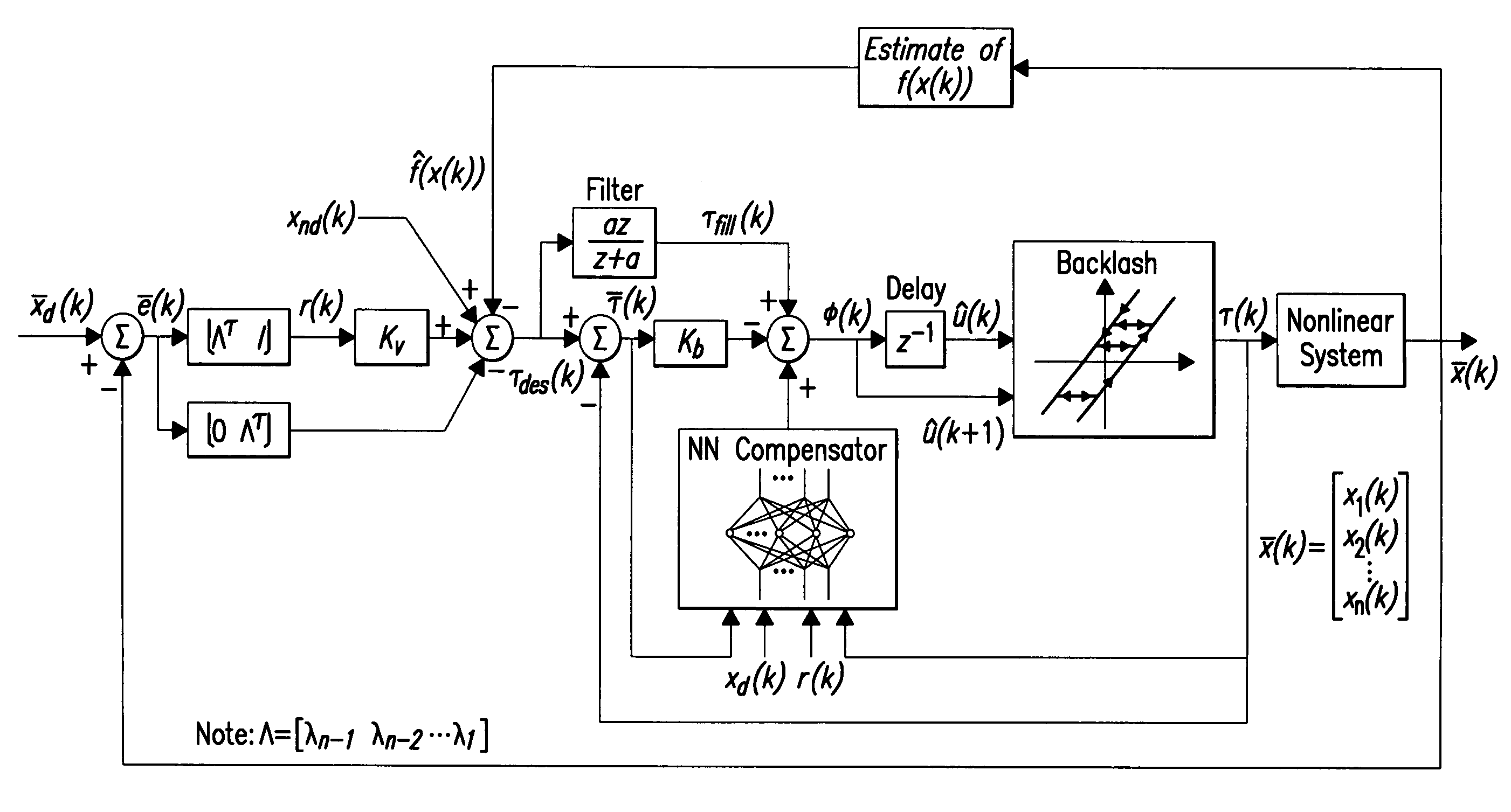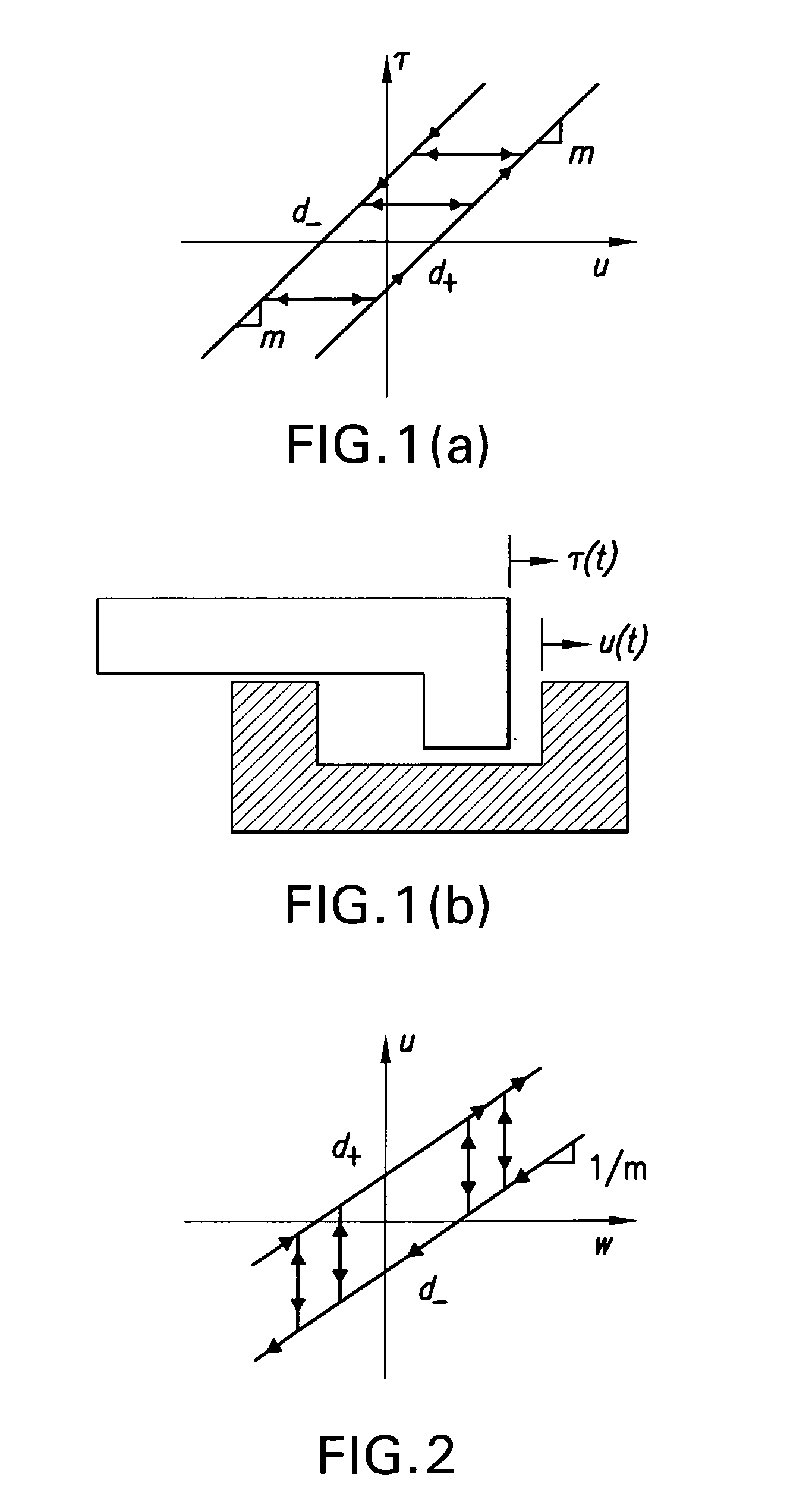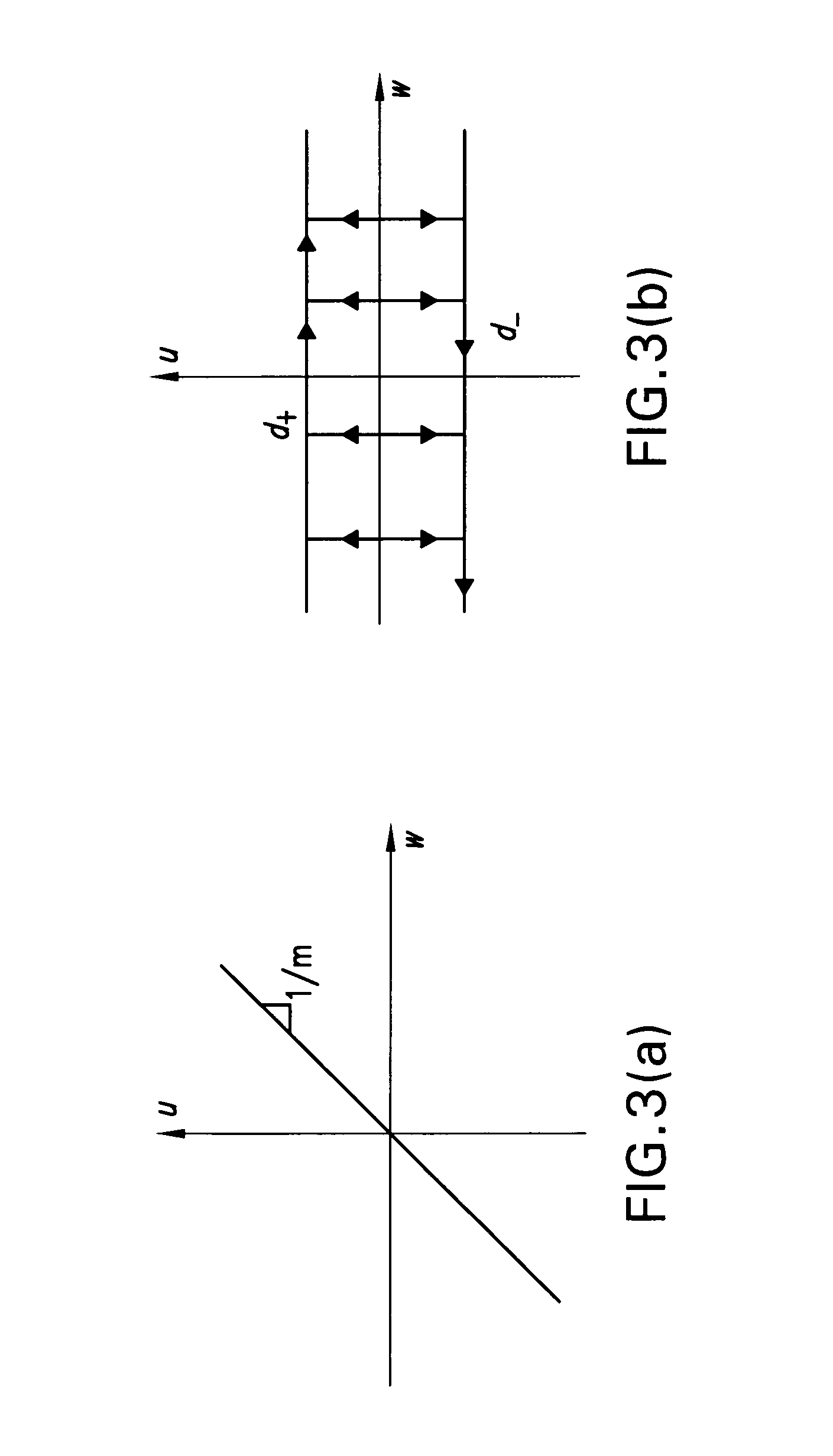Backlash compensation with filtered prediction in discrete time nonlinear systems by dynamic inversion using neural networks
a neural network and discrete time nonlinear system technology, applied in the field of neural networks, can solve the problems of inability to invert the backlash nonlinearity even for known backlash models, the inability to control the backlash nonlinearity of almost all motion control systems, and the inability to know the backlash model well or completely, etc., to achieve faster and more precise control of industrial positioning systems, and the stability of the closed loop system
- Summary
- Abstract
- Description
- Claims
- Application Information
AI Technical Summary
Benefits of technology
Problems solved by technology
Method used
Image
Examples
example 1
Simulation Results
[0099]In this section, a discrete-time NN backlash compensator according to an embodiment of this disclosure is simulated on a digital computer. It is found to be very efficient at canceling the deleterious effects of actuator backlash.
[0100]We simulate the response for the known plant with input backlash, both with and without the NN compensator. Consider the following nonlinear plant
x1(k+1)=x2(k),
[0101]x2(k+1)=-316[x1(k)1+x22(k)]+x2(k)+u(k).
[0102]The deadband widths for the backlash nonlinearity were selected as d+=d−=0.2 and the slope as m=0.5.
Trajectory Tracking
[0103]In this subsection we simulate the trajectory tracking performance of the system for sinusoidal reference signals. The reference signal used was selected to be
xd(k)=sin(w·tk+φ),
w=0.5, φ=π / 2.
[0104]The sampling period was selected as T=0.001 s.
[0105]FIG. 5 shows the system response without backlash using a standard PD controller. The PD controller does a good job on the tracking which...
PUM
 Login to View More
Login to View More Abstract
Description
Claims
Application Information
 Login to View More
Login to View More - R&D
- Intellectual Property
- Life Sciences
- Materials
- Tech Scout
- Unparalleled Data Quality
- Higher Quality Content
- 60% Fewer Hallucinations
Browse by: Latest US Patents, China's latest patents, Technical Efficacy Thesaurus, Application Domain, Technology Topic, Popular Technical Reports.
© 2025 PatSnap. All rights reserved.Legal|Privacy policy|Modern Slavery Act Transparency Statement|Sitemap|About US| Contact US: help@patsnap.com



